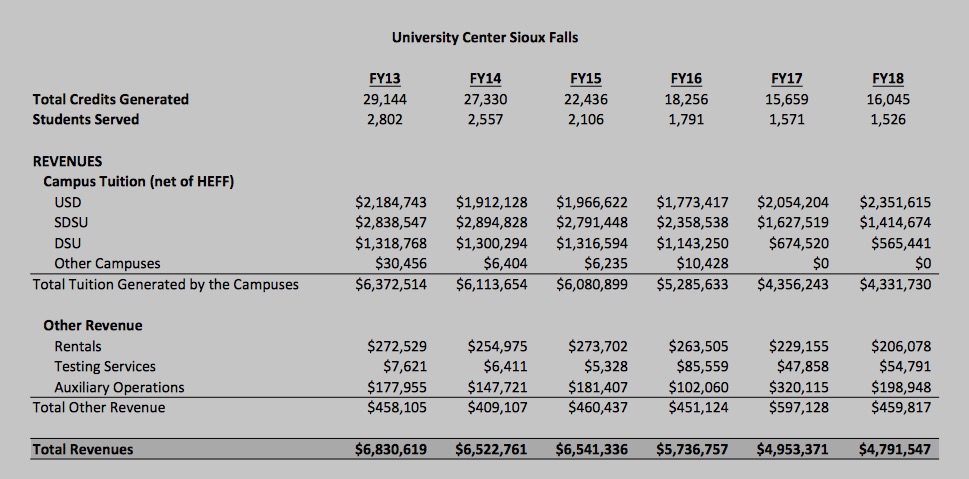Joint Appropriations gets together today in Pierre in Capitol Room 362 to discuss our faltering revenues. After lunch, they’ll discuss the appropriational ins and outs of rebranding our joint remote Regental campus in Sioux Falls as a community college.
We actually have two such remote campi: Black Hills State runs a University Center in Rapid City. BHSU is concerned that the Legislature may make the Rapid City campus a separate budget unit, which BHSU says would “limit our flexibility and efficiency.” According to BHSU, the Rapid City unit is “really just another department that operates 45 miles from the main campus.” Budgeting BHSU-RC separately would be like “requesting the Chemistry department be its own budget unit.”
The documents submitted to Approps on the community college matter include summaries of academic credits and revenue generated at the Rapid City and SIoux Falls University Centers:


Both remote campi have experienced significant drops in credits generated: 29% at Rapid City and 45% at Sioux Falls. But notice that the Rapid City campus is generating almost as many (95%) credits at the Sioux Falls campus, which has access to more than twice as large a metro population, and in FY2017 and FY2018 generated more revenue than UC Sioux Falls.
The expense figures in the same document show that UC Rapid City’s overhead was 13.1% of total expenses, while UC Sioux Falls runs with 8.4% overhead. However, the Rapid City campus ran leaner overall, with $228.30 of total expenses per credit, 76% of the Sioux Falls campus’s expense-per-credit of $301.95. Under BHSU’s management, the Rapid City campus has generated $10.4 million net revenue over six years, while their East River counterparts at Sioux Falls have netted only $1.4 million.
Hmm… those numbers suggest that if Appropriations needs to make any changes, they need to recommend that the folks running the Sioux Falls community college takes budget notes from BHSU on keeping the ship afloat.